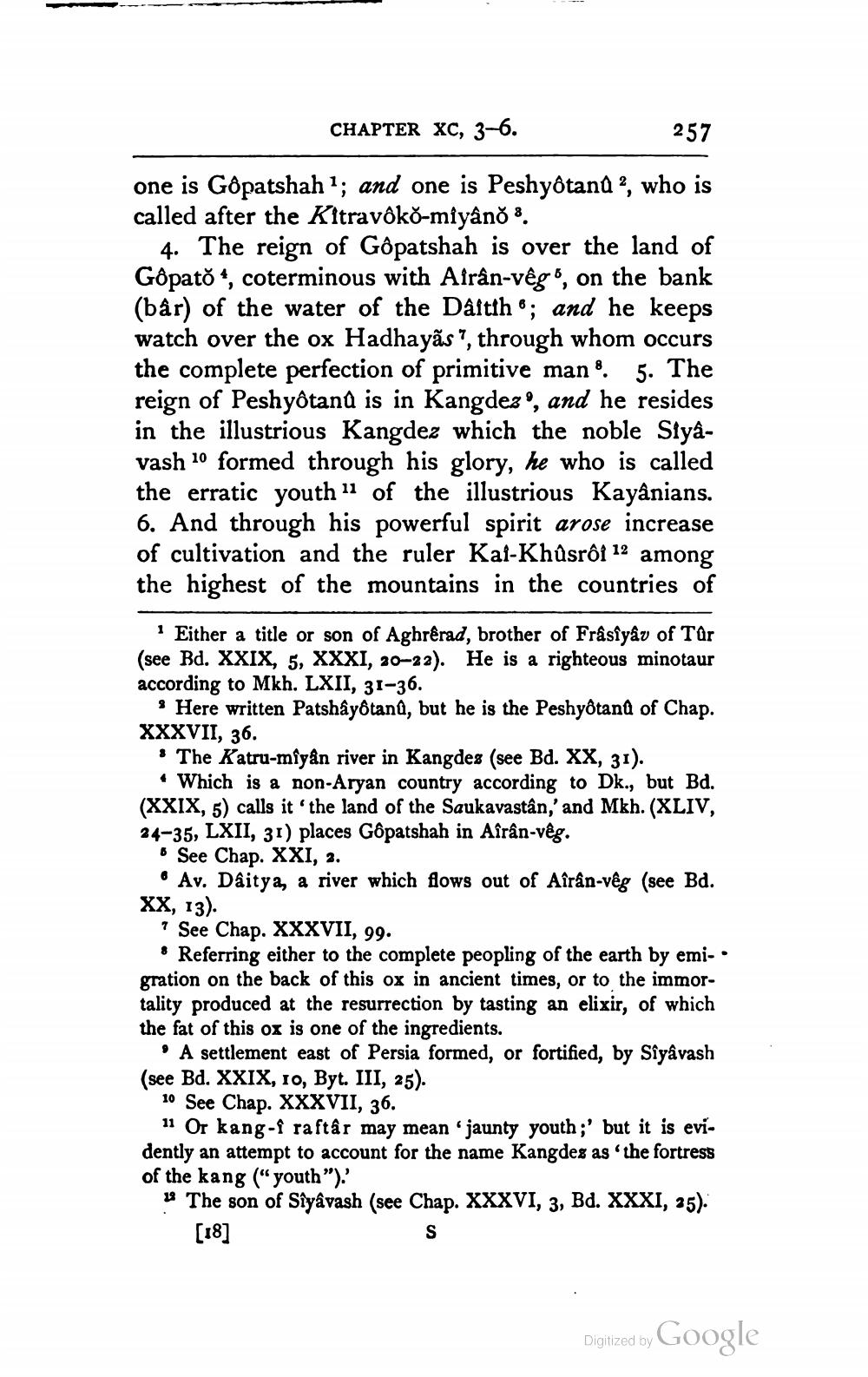________________
CHAPTER XC, 3-6.
257
one is Gôpatshah1; and one is Peshyôtanû 2, who is called after the Kitravôko-miyânŎ 3.
4. The reign of Gôpatshah is over the land of Gôpato, coterminous with Aîrân-vêg, on the bank (bar) of the water of the Dâitth; and he keeps watch over the ox Hadhayas, through whom occurs the complete perfection of primitive man". 5. The reign of Peshyôtanû is in Kangdez', and he resides in the illustrious Kangdez which the noble Styâvash 10 formed through his glory, he who is called the erratic youth" of the illustrious Kayânians. 6. And through his powerful spirit arose increase of cultivation and the ruler Kai-Khûsrôi 12 among the highest of the mountains in the countries of
1 Either a title or son of Aghrêrad, brother of Frâsîyâv of Tûr (see Bd. XXIX, 5, XXXI, 20-22). He is a righteous minotaur according to Mkh. LXII, 31-36.
• Here written Patshâyôtanû, but he is the Peshyôtanû of Chap. XXXVII, 36.
The Katru-miyân river in Kangdes (see Bd. XX, 31).
Which is a non-Aryan country according to Dk., but Bd. (XXIX, 5) calls it 'the land of the Saukavastân,' and Mkh. (XLIV, 24-35, LXII, 31) places Gôpatshah in Aîrân-vêg.
See Chap. XXI, 2.
Av. Dâitya, a river which flows out of Aîrân-vêg (see Bd. XX, 13).
7 See Chap. XXXVII, 99.
* Referring either to the complete peopling of the earth by emi-⚫ gration on the back of this ox in ancient times, or to the immortality produced at the resurrection by tasting an elixir, of which the fat of this ox is one of the ingredients.
• A settlement east of Persia formed, or fortified, by Sîyâvash (see Bd. XXIX, 10, Byt. III, 25).
10 See Chap. XXXVII, 36.
"Or kang-f raftâr may mean 'jaunty youth;' but it is evidently an attempt to account for the name Kangdez as 'the fortress of the kang ("youth")."
"The son of Sîyâvash (see Chap. XXXVI, 3, Bd. XXXI, 25).
[18]
S
Digitized by
Google




